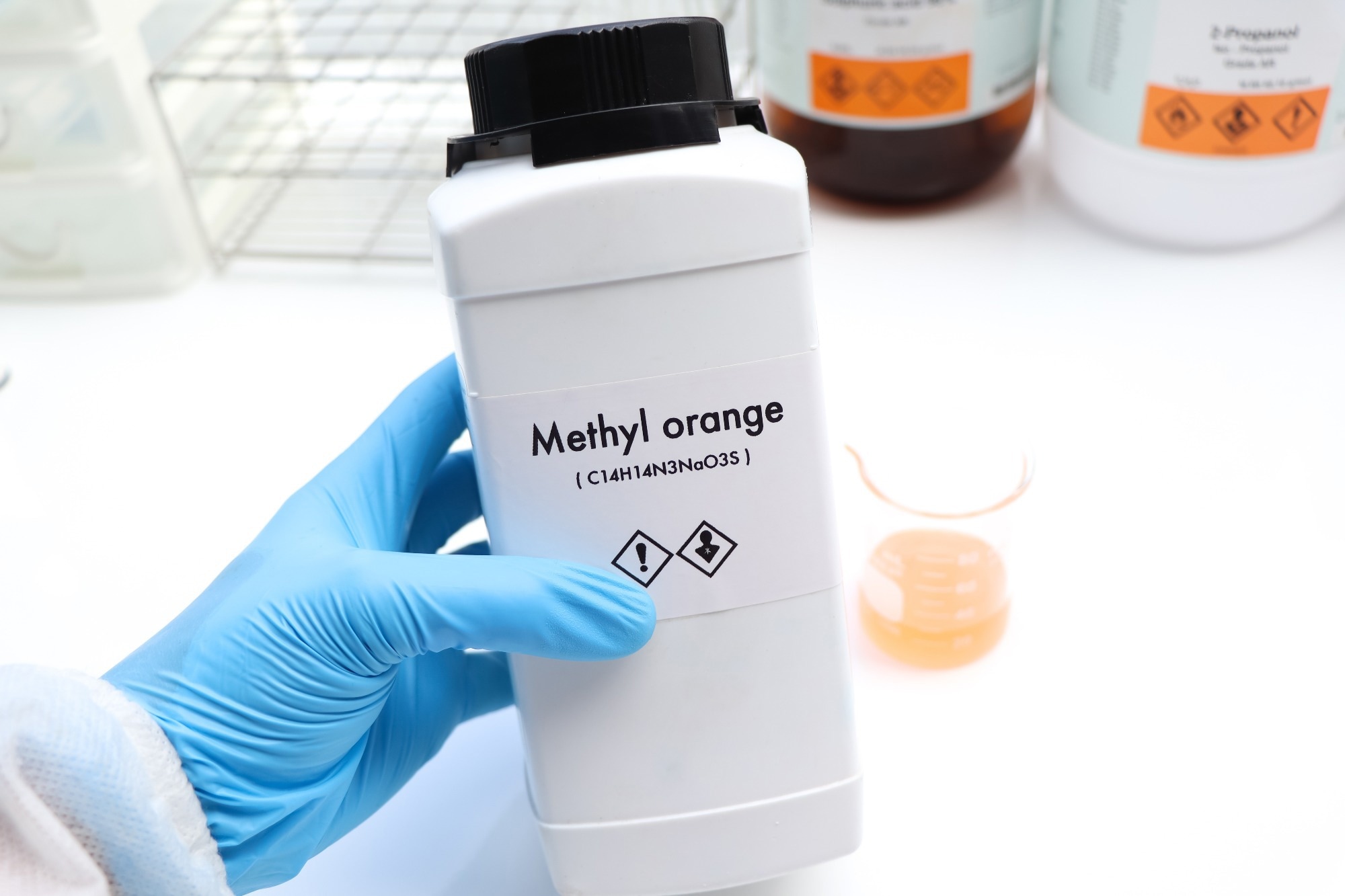In a recent article published in Coatings, researchers from China investigated the synthesis and photocatalytic properties of bamboo-like MnO₂/TiO₂ nanotube arrays (NTAs). The study highlighted the significance of combining MnO₂ with TiO₂ to improve photocatalytic activity and visible light utilization.

Image Credit: chemical industry/Shutterstock.com
Background
The increasing prevalence of synthetic dyes in industrial processes has raised significant environmental concerns due to their toxic and persistent nature. Among these dyes, methyl orange is widely used for its vibrant color and effectiveness as a pH indicator. However, its presence in wastewater poses serious ecological risks, as it can harm aquatic life.
Traditional wastewater treatment methods often fail to effectively remove such contaminants, necessitating the development of more efficient and sustainable approaches.
The Current Study
The MnO₂/TiO₂ NTAs were prepared using high-temperature hydrothermal (MT-HM) and low-temperature hydrothermal (MT-LM) processes. Scanning electron microscopy (SEM) was used to study the samples' surface morphology, and energy dispersive spectroscopy (EDS) determined the elemental composition and concentration of the synthesized nanocomposites.
X-ray diffraction (XRD) analyzed the phase structure of the samples, identifying the crystalline phases present. Transmission electron microscopy (TEM) examined the microstructure, while UV-Vis-NIR spectrophotometry evaluated the light absorption properties.
The photocatalytic performance of the MnO₂/TiO₂ NTAs was assessed by measuring the degradation of methyl orange solution under UV light and simulated sunlight conditions. Experiments focused on varying pH levels, particularly pH = 1, to evaluate the influence of acidity on degradation efficiency. The concentration of methyl orange was monitored over time using UV-Vis spectrophotometry to determine the degradation rate. Stability tests assessed the photocatalysts' reusability and long-term effectiveness.
Results and Discussion
The synthesized bamboo-like MnO₂/TiO₂ nanotube arrays (NTAs) were characterized to understand their structural and morphological properties. SEM images revealed that the TiO₂ NTAs exhibited a distinct bamboo-like structure with well-defined tubular features. The walls of the nanotubes appeared folded, which is beneficial for increasing the surface area available for photocatalytic reactions.
Upon the deposition of MnO₂, the morphology of the NTAs was preserved, indicating successful integration of MnO₂ onto the TiO₂ surface without significant agglomeration.
EDS analysis confirmed the presence of manganese in the MnO₂/TiO₂ composites, with varying concentrations corresponding to the different KMnO₄ solution concentrations used during synthesis. The elemental mapping further illustrated the uniform distribution of MnO₂ across the TiO₂ NTAs, which is crucial for enhancing photocatalytic activity by facilitating charge separation and transfer. The XRD patterns indicated the crystalline phases of both TiO₂ and MnO₂.
The UV-Vis-NIR spectrophotometry results demonstrated that the MnO₂/TiO₂ NTAs exhibited enhanced light absorption in the visible region compared to pure TiO₂. The band gap energy of the composites was calculated using the Tauc plot method, revealing a redshift in the absorption edge due to the presence of MnO₂. This modification is advantageous as it allows for better utilization of sunlight, which is essential for practical photocatalytic applications.
The enhanced light absorption is attributed to the formation of a heterojunction between TiO₂ and MnO₂, which facilitates the generation of photogenerated charge carriers. MnO₂ extends the light absorption range and plays a critical role in separating electron-hole pairs, thereby reducing recombination rates. The photocatalytic performance results indicated that the MnO₂/TiO₂ NTAs exhibited significantly higher photocatalytic activity than pure TiO₂ NTAs.
The stability and reusability tests showed that the photocatalysts maintained high activity over several cycles, with only slightly decreased degradation efficiency. This stability is attributed to the robust structure of the bamboo-like NTAs, which prevents significant leaching of MnO₂ during the photocatalytic process.
The enhanced photocatalytic activity of the MnO₂/TiO₂ NTAs can be explained by the synergistic effects between TiO₂ and MnO₂. The formation of a heterojunction at the interface of TiO₂ and MnO₂ promotes efficient charge separation, where photogenerated electrons from TiO₂ can be transferred to MnO₂. This transfer reduces the recombination of electron-hole pairs, thereby increasing the availability of reactive species for the degradation of organic pollutants.
Conclusion
The research successfully synthesized bamboo-like MnO₂/TiO₂ NTAs with enhanced photocatalytic properties, demonstrating their potential for environmental remediation applications. The findings underscore the importance of structural design in photocatalysts and suggest further exploration of these materials for more effective solutions in degrading organic pollutants under sunlight. This study contributes valuable insights into developing advanced photocatalytic systems for sustainable environmental management.
Journal Reference
Liang F., et al. (2024). Bamboo-like MnO2/TiO2 Nanotube Arrays with Enhanced Photocatalytic Degradation. Coatings. DOI: 10.3390/coatings14070894